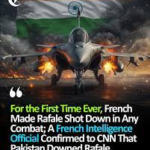Introduction
The latest round of nuclear negotiations between Iran and the United States concluded with both sides describing the discussions as “difficult” yet productive enough to warrant further dialogue. As international pressure mounts and regional tensions remain high, the continuation of talks signals a mutual—if fragile—commitment to diplomacy. Here are the top five takeaways from this week’s developments in the Iran-US nuclear negotiations.





1. Talks Described as “Difficult” but Not Broken
Iranian Foreign Ministry officials characterized the negotiations as tough, with significant disagreements still unresolved. However, the fact that both Tehran and Washington agreed to continue the dialogue indicates that diplomacy remains on the table. U.S. State Department sources echoed this, noting the “constructive, albeit strained” tone of the discussions.
2. Focus Remains on Reviving Elements of the JCPOA
Despite having exited the Joint Comprehensive Plan of Action (JCPOA) under the Trump administration, the Biden White House remains open to reviving key elements of the deal. Iran, in turn, has expressed conditional interest in re-adherence if sanctions relief is prioritized. The enrichment level of uranium and international inspections continue to be sticking points.
3. Sanctions Relief Continues to Be Iran’s Red Line
Iran is demanding the lifting of U.S. sanctions as a precondition for compliance with nuclear restrictions. Iranian negotiators emphasized that economic relief is not just a bargaining chip—it’s a necessity for any deal to move forward. The U.S., meanwhile, is seeking guarantees around nuclear rollback before making any concessions.
4. Gulf States and Israel Watching Closely
Countries in the region, including Israel and key Gulf states like Saudi Arabia and the UAE, are closely monitoring the talks. Israel has been vocally skeptical, warning against what it calls a “bad deal” that may embolden Iran’s regional ambitions. Gulf Cooperation Council (GCC) members are pushing for a broader security framework that includes ballistic missile restrictions.
5. EU and China Urging Continued Diplomacy
European Union diplomats, along with Chinese representatives, have urged both sides to stay committed to peaceful negotiations. China, a signatory to the original JCPOA, has recently increased diplomatic outreach to both Washington and Tehran. The EU’s foreign policy chief Josep Borrell reiterated that the window for diplomacy remains open—but not indefinitely.
Conclusion
While the Iran-US nuclear talks remain fraught with challenges, the mutual decision to continue negotiating signals a potential path forward. With regional and global stakeholders heavily invested, the coming weeks will be critical in determining whether a new agreement—or at least a framework—can emerge. As both sides prepare for the next round, the world watches with cautious optimism.
Explore more: U.S. Signals Shift in Middle East Strategy








